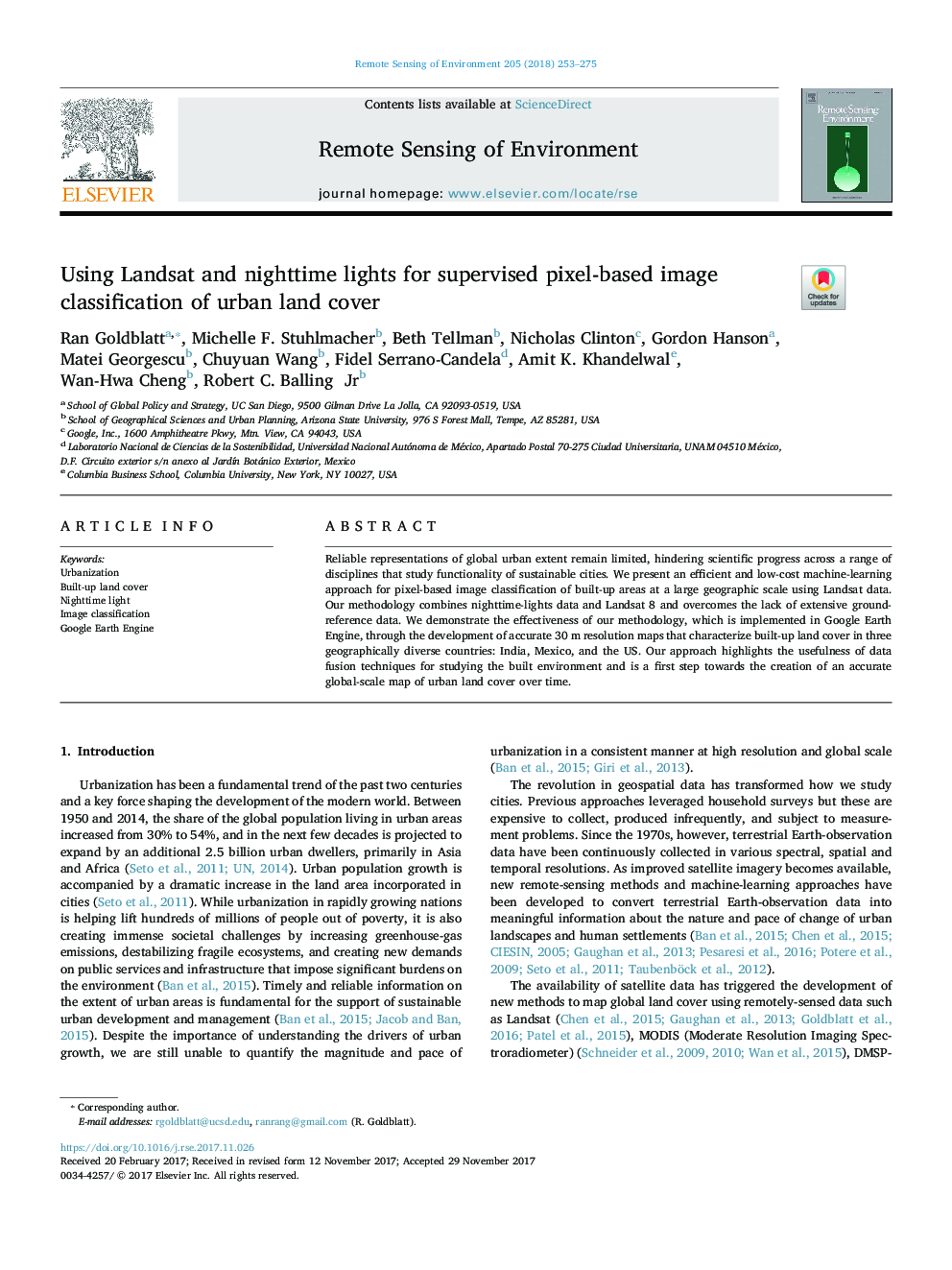| Article ID | Journal | Published Year | Pages | File Type |
|---|---|---|---|---|
| 8866787 | Remote Sensing of Environment | 2018 | 23 Pages |
Abstract
Reliable representations of global urban extent remain limited, hindering scientific progress across a range of disciplines that study functionality of sustainable cities. We present an efficient and low-cost machine-learning approach for pixel-based image classification of built-up areas at a large geographic scale using Landsat data. Our methodology combines nighttime-lights data and Landsat 8 and overcomes the lack of extensive ground-reference data. We demonstrate the effectiveness of our methodology, which is implemented in Google Earth Engine, through the development of accurate 30Â m resolution maps that characterize built-up land cover in three geographically diverse countries: India, Mexico, and the US. Our approach highlights the usefulness of data fusion techniques for studying the built environment and is a first step towards the creation of an accurate global-scale map of urban land cover over time.
Related Topics
Physical Sciences and Engineering
Earth and Planetary Sciences
Computers in Earth Sciences
Authors
Ran Goldblatt, Michelle F. Stuhlmacher, Beth Tellman, Nicholas Clinton, Gordon Hanson, Matei Georgescu, Chuyuan Wang, Fidel Serrano-Candela, Amit K. Khandelwal, Wan-Hwa Cheng, Robert C. Jr,
